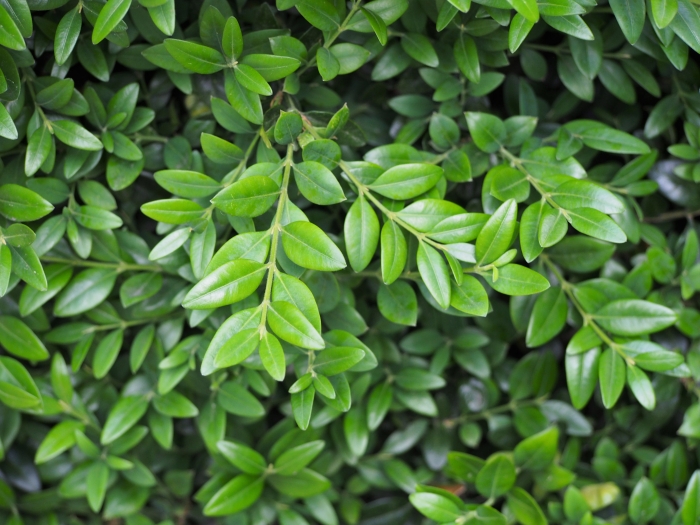Common Box
(Buxus sempervirens)
Common Box (Buxus sempervirens)
/
/

Agnieszka Kwiecień, Nova
CC BY-SA 4.0


























































































Estimated Native Range
Summary
Common Box is valued for its dense foliage and ability to withstand heavy pruning, making it ideal for topiary and hedges. It is also used in parterres and knot gardens. The plant’s small leaves and evergreen nature contribute to its popularity in formal garden design. It is tolerant of a range of soil types, provided they are well-drained, and can grow in full sun to part shade. However, it is susceptible to box blight and box tree moth, which can cause significant damage. To prevent these issues, good air circulation and avoiding overhead watering are recommended.CC BY-SA 4.0
Plant Description
- Plant Type: Shrubs
- Height: 5-15 feet
- Width: 5-15 feet
- Growth Rate: Slow
- Flower Color: N/A
- Flowering Season: Spring
- Leaf Retention: Evergreen
Growth Requirements
- Sun: Full Sun, Part Shade
- Water: Medium
- Drainage: Fast, Medium, Slow
Common Uses
Bank Stabilization, Bee Garden, Bird Garden, Border Plant, Deer Resistant, Drought Tolerant, Fire Resistant, Fragrant, Hedges, Low Maintenance, Potted Plant, Rabbit Resistant, Rock Garden, Street Planting
Natural Habitat
Open woodlands and rocky hillsides in Southern Europe, Northern Africa, and Western Asia
Other Names
Common Names: Caucasian Boxwood , European Box , Persian Boxwood , Turkish Boxwood , Boxtree , Boxwood , Boxwoodtree , Box , Common Boxwood , French Boxwood
Scientific Names: Buxus sempervirens , Buxus variegata , Buxus suffruticosa , Buxus elegantissima , Buxus argentea , Buxus colchica , Buxus nana , Buxus hyrcana , Buxus sempervirens var. suffruticosa , Buxus sempervirens var. arborescens
GBIF Accepted Name: Buxus sempervirens L.